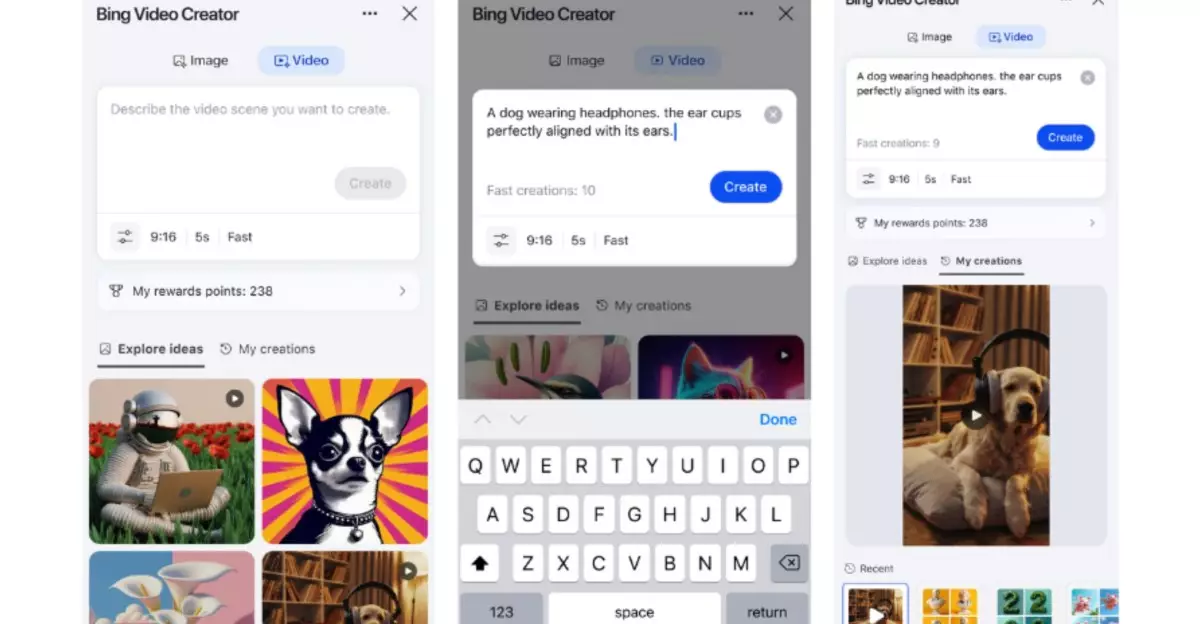The future of content creation appears to be within reach for everyone, thanks to Microsoft’s bold new offering — an AI video generator integrated into the Bing mobile app. This innovative feature is powered by OpenAI’s Sora, a text-to-video model that has long been under the lock and key of a monthly subscription. Now, users can create short, personalized clips without incurring costs, marking a significant shift in how creative tools are distributed and utilized. Microsoft’s intent to democratize access to AI-generated video production signifies a commitment to fostering creativity among broader audiences, not just those who can afford premium services.
This shift is monumental, as it aligns with the recent trend of moving creative tools from exclusive platforms to more accessible spaces. It’s a sign that technology is not just for the elite but is meant to empower everyone, from casual creators to professional content makers.
Features That Enhance User Experience
Upon the introduction of the Bing Video Creator, Microsoft made it clear that they prioritized user experience alongside accessibility. With this new feature, users can generate videos simply by describing what they want to create in the Bing search bar or accessing the feature through the app’s menu. The ability to queue up to three video projects simultaneously is particularly user-friendly, catering to those looking to experiment with various creative ideas.
The generator offers two speed options: a “Standard” generation speed that is available for free, and a “Fast” option for those who want instant results. While ten fast generations can be utilized without charge, this model serves as a delicate balancing act between accessibility and user engagement. After consuming the free fast generations, users are encouraged to either revert to the slower, standard speed or redeem Microsoft Rewards points, cleverly incentivizing continued engagement with the platform.
However, the practicality of these features may not fully compensate for the quality of output, which presents its own challenges.
A Critical Look at Output Quality
Despite the robust framework for video creation, the quality of the output raises eyebrows. Early demonstrations of the AI’s capabilities revealed clips that lacked the finesse expected from a sophisticated model. The characters displayed in various demonstration videos often appeared cartoonish, and the movements resembled a disjointed animation rather than fluid motion. While the AI-generated videos made using Bing’s Video Creator are a step up from what other platforms like Google’s Veo 3 have offered, they remain rough around the edges.
This discrepancy in quality highlights a significant challenge: the disparity between what AI is capable of and the current output of this specific model. While it is vital to grant users access to creative tools, it’s equally essential to ensure that the outputs are of a quality that satisfies users. There’s a delicate line to tread; innovations must not only be made accessible, but they must also maintain a level of quality that inspires further creativity rather than stifling it due to subpar results.
The Road Ahead: Opportunities and Challenges
Microsoft’s initiative could pave the way for a new era in video creation, opening doors for endless possibilities in content creation, marketing, and personal expression. The roadmap suggests that future updates will likely enhance quality, introduce new formats, and broaden functionality — factors that could significantly improve user satisfaction and output.
However, the unaddressed quality issues present a hurdle that the company must overcome to truly democratize video creation effectively. While the intentions behind this technology may be noble, execution will ultimately determine its impact. If Microsoft is committed to refining the model further, they must actively gather and act on user feedback, ensuring that the creator community feels supported and empowered.
The plunge into AI-driven creativity is both an exciting and daunting venture. The world is changing, and with it, the tools for content creation are evolving. Microsoft’s Bing Video Creator is a glimpse into a future where anyone can transform their thoughts into shareable media, but the journey to perfection is still ongoing.

